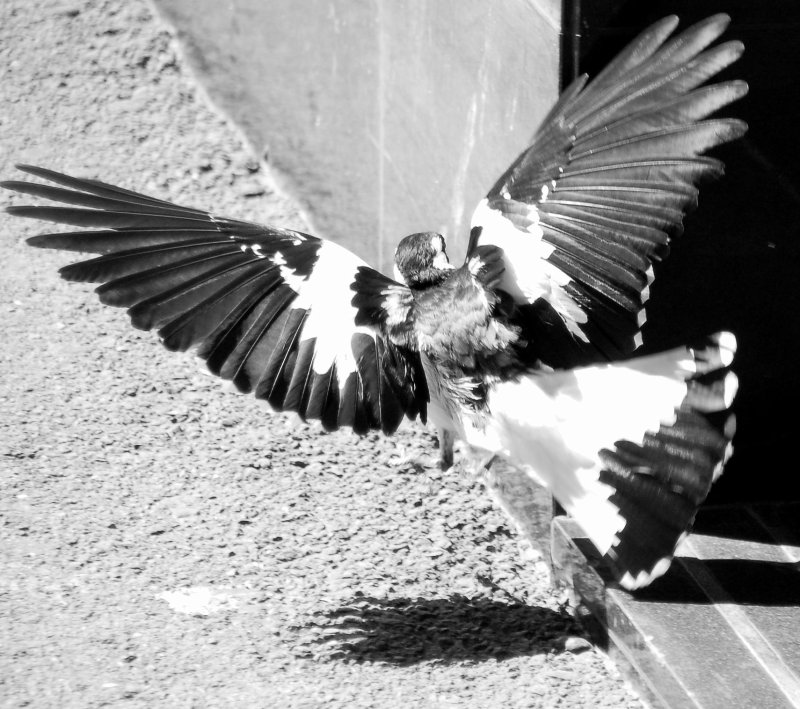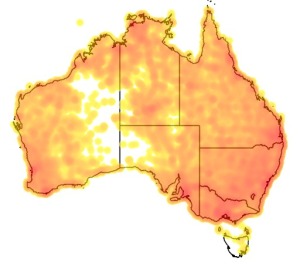Colours
Distinguishing features
They are boldly pied in black and white and are a familiar sight around the country: sitting on telephone wires either singly or in pairs, or patrolling any patch of bare ground, especially foreshores of swamps, on their well-developed legs.
The sexes are similar from a distance but easy to tell apart: the female has a white throat, the male a black throat and a white "eyebrow".
Juveniles and immatures of either sex have the white throat of the female and the black eyestripe of the male, and a white belly also accompanies.
Size
- From 26 cm to 30 cm (Length of specimen)
Wingspan
- Wingspan data is not yet available.
Synonyms
Interesting facts
- They are one of the 200-odd species of bird around the world that are known to sing in duet; each partner producing about one note a second, but a half-second apart, so that humans find it difficult to tell that there are actually two birds singing, not one. In the case of the Magpie-lark, the duet singing is now known to be cooperative: pairs sing together to defend their territory. (Wikipedia)
Distribution
Distribution and habitat preferences
It can adapt to an enormous range of different habitats, requiring only some soft, bare ground for foraging, a supply of mud for making a nest, and a tree to make it in. (Wikipedia)
Diet
It is a primarily carnivorous species that eats all sorts of small creatures. (Wikipedia)





